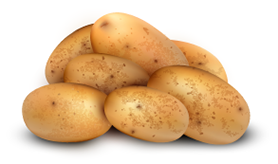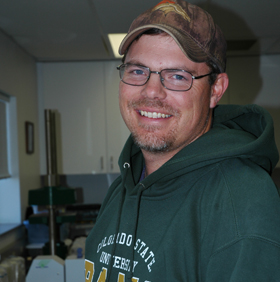Potato Postharvest Biology
Welcome to the Post Harvest Physiology Program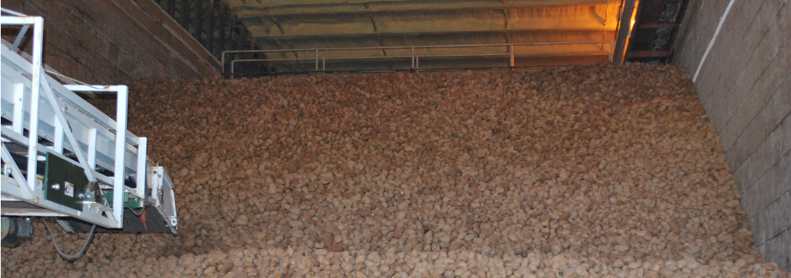
Potato Postharvest Biology Home
Program Overview
The potato postharvest physiology program at San Luis Valley Research Center serves the potato industry in three different areas of research. The first area of research focuses on maintaining the quality of tubers in long-term potato storages by reducing shrinkage, pressure bruise and other storage related physiological disorders. The second focus on developing methods and evaluating emerging technologies that reduce storage diseases (esp., powdery scab and silver scurf). The third area of research is studying the importance of cultivar differences in nutritional content as a way to improve marketability.
Relationship between tuber storage proteins and tuber powdery scab resistance in potato
The potato genotypes with russet tuber skin are generally resistant to powdery scab (Spongospora subterranea f.sp. subterranea or Sss).
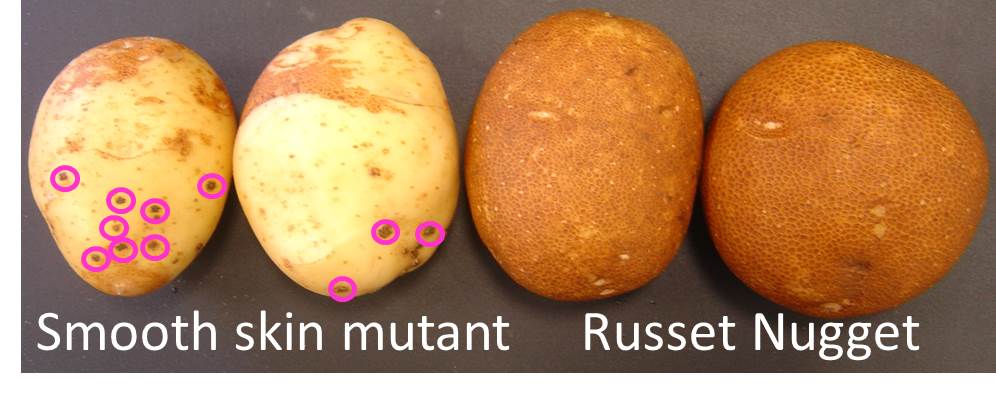
Smooth skin mutants of Centennial Russet and Russet Nugget have shown partial russet skin. The smooth skin area of the same tuber is susceptible to powdery scab. This skin mutation offers opportunity to study the genetics of a specific russeting phenotype.
The objective of this study was to find out the relationship of these proteins with potato tuber powdery scab resistance, especially in russet skinned potatoes. An evaluation of potato germplasm with different tuber characteristics in a greenhouse environment over several years suggests that russet skinned tuber genotypes with negligible tuber disease severity index (DSI) and 100% marketability were resistant to powdery scab. Higher physiological levels of LOX protein (on a dry weight basis) were negatively correlated with tuber DSI and positively correlated with tuber russet skin. The proposed role of LOX protein in suberin- and/or non-suberin-mediated mechanisms of powdery scab resistance in russet skinned tubers are discussed here. The physiological levels of LOX protein can be considered as a useful marker for powdery scab resistance in potato breeding programs.
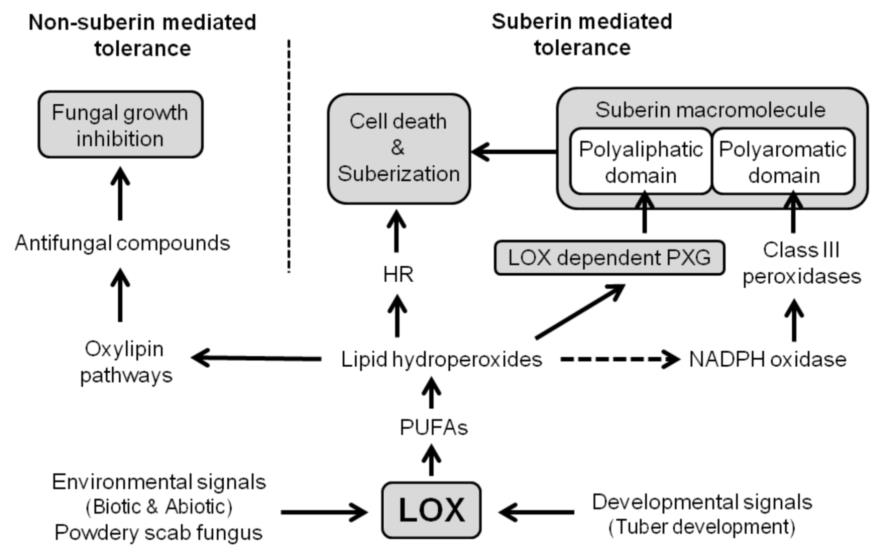
Proposed role of the LOX in powdery scab resistance in russet skinned potato tubers. Perla et al. AJPR. 2013.

